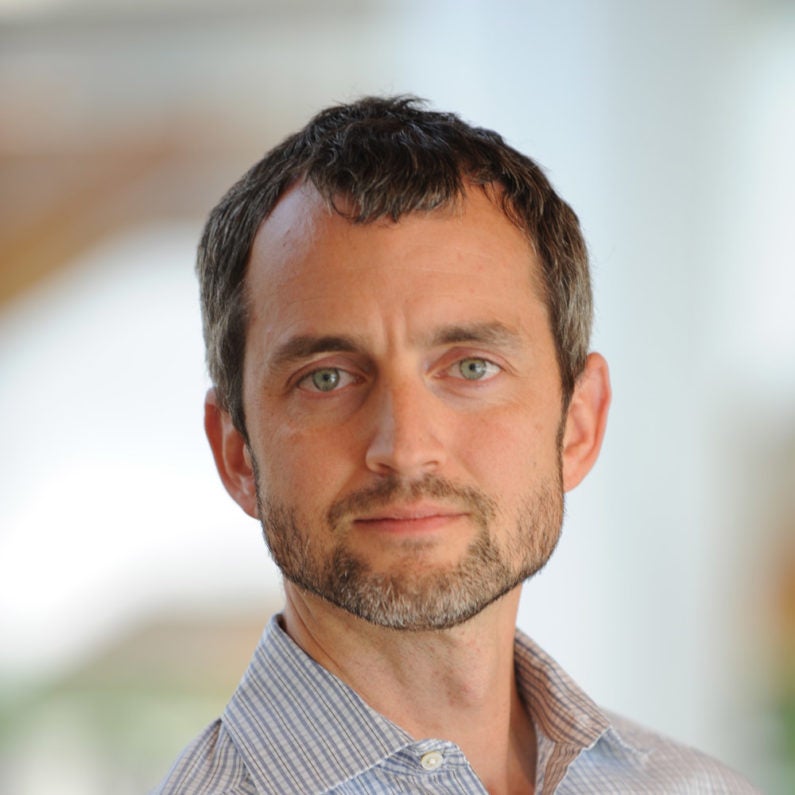Stanford study examines fake news and the 2016 presidential election
Fabricated stories favoring Donald Trump were shared a total of 30 million times, nearly quadruple the number of pro-Hillary Clinton shares leading up to the election, according to Stanford economist Matthew Gentzkow. Even so, he and his co-author find that the most widely circulated hoaxes were seen by only a small fraction of Americans.
Of all the heated debates surrounding the 2016 presidential race, the controversy over so-called “fake news” and its potential impact on Donald Trump’s victory has been among the fiercest.
Now there’s concrete data proposing that false news stories may not have been as persuasive and influential as is often suggested. But the economists behind the research do not conclude one way or the other whether fake news swayed the election.
On Wednesday, economists Matthew Gentzkow of Stanford and Hunt Allcott of New York University released a study also showing that social media played a much smaller role in the election than some might think.
“A reader of our study could very reasonably say, based on our set of facts, that it is unlikely that fake news swayed the election,” said Gentzkow, an economics professor and senior fellow at the Stanford Institute for Economic Policy Research (SIEPR).
“But that conclusion ultimately depends on what readers think is a reasonable benchmark for the persuasiveness of an individual fake news story,” he said.
The timing of the working paper, “Social Media and Fake News in the 2016 Election,” is critical. Trump’s victory has been dogged by claims that false news stories – including false reports that Hillary Clinton sold weapons to ISIS and the pope had endorsed Trump – altered the outcome.
Facebook and other social media sites have also come under attack for allowing fabricated news stories to circulate unchecked on their platforms.
“There are lots of pieces to this puzzle,” said Gentzkow, referring to the impact of social media on the election.
Social media: ‘Important, but not dominant’
In their study, Gentzkow and Allcott analyzed three sets of data. The first tracked the amount of traffic on news websites that was directed by social media. The second examined the top fake news stories identified by BuzzFeed and two prominent fact-checking sites, Snopes and PolitiFact. The third consisted of the researchers’ own post-election online survey of 1,200 voters.
Gentzkow and Allcott show that social media wasn’t the major source of political news for most Americans in 2016; only 14 percent say they relied on Facebook and other social media sites as their most important source of election coverage.
“Social media was an important but not dominant source of news in the run-up to the election,” the authors write. Television, it turns out, remains the go-to place for political news.
In the three months before the election, pro-Trump fabricated stories tracked by the researchers were shared a total of 30 million times, nearly quadruple the number of pro-Clinton shares. Even so, Gentzkow and Allcott find that the most widely circulated hoaxes were seen by only a small fraction of Americans. And only about half of those who saw a false news story believed it.
Even if a voter recalled a fake news story and believed what it said, the story would need to have been surprisingly persuasive to have changed his or her vote.
“For fake news to have changed the outcome of the election, a single fake news story would need to have convinced about 0.7 percent of Clinton voters and non-voters who saw it to shift their votes to Trump, a persuasion rate equivalent to seeing 36 television campaign ads,” the authors conclude.
The study comes with important caveats. Gentzkow said, for example, that a voter doesn’t necessarily need to recall a specific news story in order to have developed a negative view of either Trump or Clinton.
A deeper partisan divide?
The 2016 election isn’t the only time when technology has been seen as a threat to electoral politics, Gentzkow and Allcott note. Both the advent of cheap newsprint and television were considered dangerous to American democracy.
Social media is creating its own set of hazards with potentially profound implications, Gentzkow said. Increasingly, the influence of major media outlets is diminishing, especially at a time when anyone can dream up and disseminate a story, real or not, with nothing more than an imagination and Internet access.
Factor in the possibility that social media could further segregate voters based on party affiliation and “you have a potential game-changer in terms of the degree of polarization in this country,” Gentzkow said.

